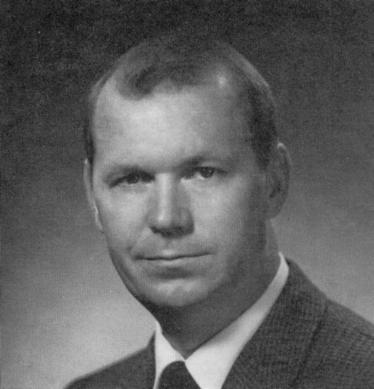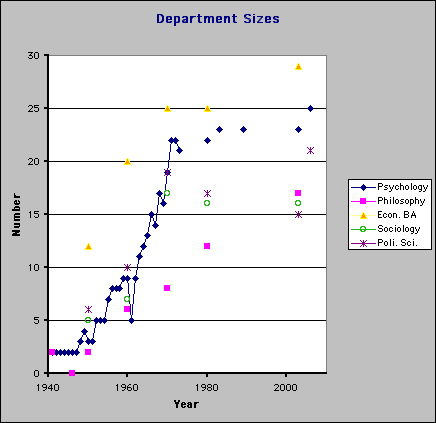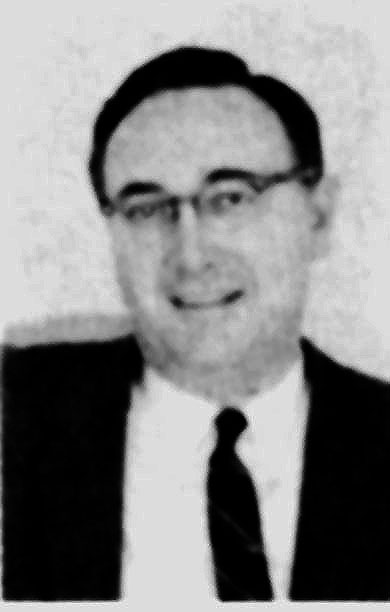
 Jum Nunnally replaced Stanford Ericksen as chair in 1961. He came from the University of Illinois the
previous year and served as chair for three years, then agreed to another three-year term starting
in 1967. Jum oversaw a restructuring of the department and the largest growth in its history.
Jum Nunnally replaced Stanford Ericksen as chair in 1961. He came from the University of Illinois the
previous year and served as chair for three years, then agreed to another three-year term starting
in 1967. Jum oversaw a restructuring of the department and the largest growth in its history.
Jum C. Nunnally (1924-1982). Jum was born and raised in Alabama, completed high school in 1942, and then joined the Army Air Corp. He often credited his score on the AGCT, which marked him mentally qualified for Officer training and eventually led to his pilot wings, with awakening his interest in psychometrics.
After WWII, he entered Birmingham Southern University, graduated in 1949, and went to the University of Chicago, completing his PhD in 1952 and joining the psychology faculty at the University of Illinois.
In addition to the indelible mark he left on the department, Jum made substantial contributions to psychometrics. To quote from Jum’s obituary published in Applied Psychological Measurement, written by Bruce Bloxom and Richard Blanton:
Clearly, Jum’s major gift to the field of measurement was his communication of psychometric knowledge to the general audience of researchers in education, psychology, and medicine. In his widely cited textbook, Psychometric Theory, he provided an excellent overview of important issues in measurement while deftly avoiding the use of unnecessarily complex mathematics. A similar pattern of exposition was employed in a number of methodological chapters which he wrote . . . The effect of this work is that an understanding of the problems and promises of psychometric methods has become readily available to the numerous researchers who are not mathematically sophisticated and who, prior to committing themselves to learning our methods, require and seek an intuitive grasp of psychometrics. (p. 2)
Bloxom and Blanton add:
Jum’s important contributions include a project which may not be known to many specialists in quantitative methods. During his years at the University of Illinois, he directed a large-scale survey of attitudes toward the mentally disturbed and mental health. The work culminated in his authorship of the book Popular Conceptions of Mental Health: Their Development and Change, which was published in 1961. This volume became a key resource document in the planning and implementation of our modern mental health systems, in which treatment occurs in community mental health centers instead of residential institutions. (p.2).
Department Growth. By 1970, very few of the 1959 faculty remained. Most of the new were trained in the Midwest: Illinois and Minnesota being major suppliers. The prevailing growth philosophy was twofold: cover the field broadly, and gather a collegial faculty. Areas not included were industrial psychology, and, because of Peabody’s proximity, educational psychology and counseling.

This figure plots the number of full-time faculty in the Department of Psychology and Philosophy over the years 1941-2006 (They were the same department until 1950), and the Departments of Economics-Business Administration, Sociology, and Political Science over the years 1950-2003 (2006 for Political Science).
The figures were taken from Vanderbilt Bulletins, and similar documents, and are estimates only, since the Bulletins do not always distinguish between full- and part-time faculty.
As can be seen, the size of the faculty nearly quadrupled in the 60's.
New faculty had to show evidence or promise of research productivity, but collegiality as a significant feature of the department – a hallmark that remains to this day - began in the Nunnally years. In the sixties even the social life was with other department members and their families. We partied together: Christmas, Fourth of July with fireworks, Easter with egg hunts, spring and fall department picnics with softball games pitting faculty vs. graduate students. The department was young and a department baby crib was passed around.
Nunnally wrote, in a 1963 Planning Study requested by the administration, "in five years we will need 19 or 20 FTEs. [We numbered 12 FTEs at the time.] We would resist ever getting larger than that. If we did it might break down the ‘family atmosphere’ that we now have" (Nunnally, 1963, p. 18)As far as I know, only two members of the department are honored by the University with a physical memorial
on the campus. The first was Lyle Lanier, who has his picture mounted at the entrance to the
University Archive Library. (Oddly, for his work with the Agrarians, not for his Psychology connection).
The second was Jum Nunnally, whose memorial is tagged to a tree, shown
here, near Wilson Hall. The tag says
"IN MEMORY OF
Jum C. Nunnally
Chairman, Psychology
Department
1961-1964, 1967-1970".
The remainder of this section is under construction.

 Don Thistlethwaite
Don Thistlethwaite
APA obituary for Don Thistlethwaite.
Next Section: 1969-1989